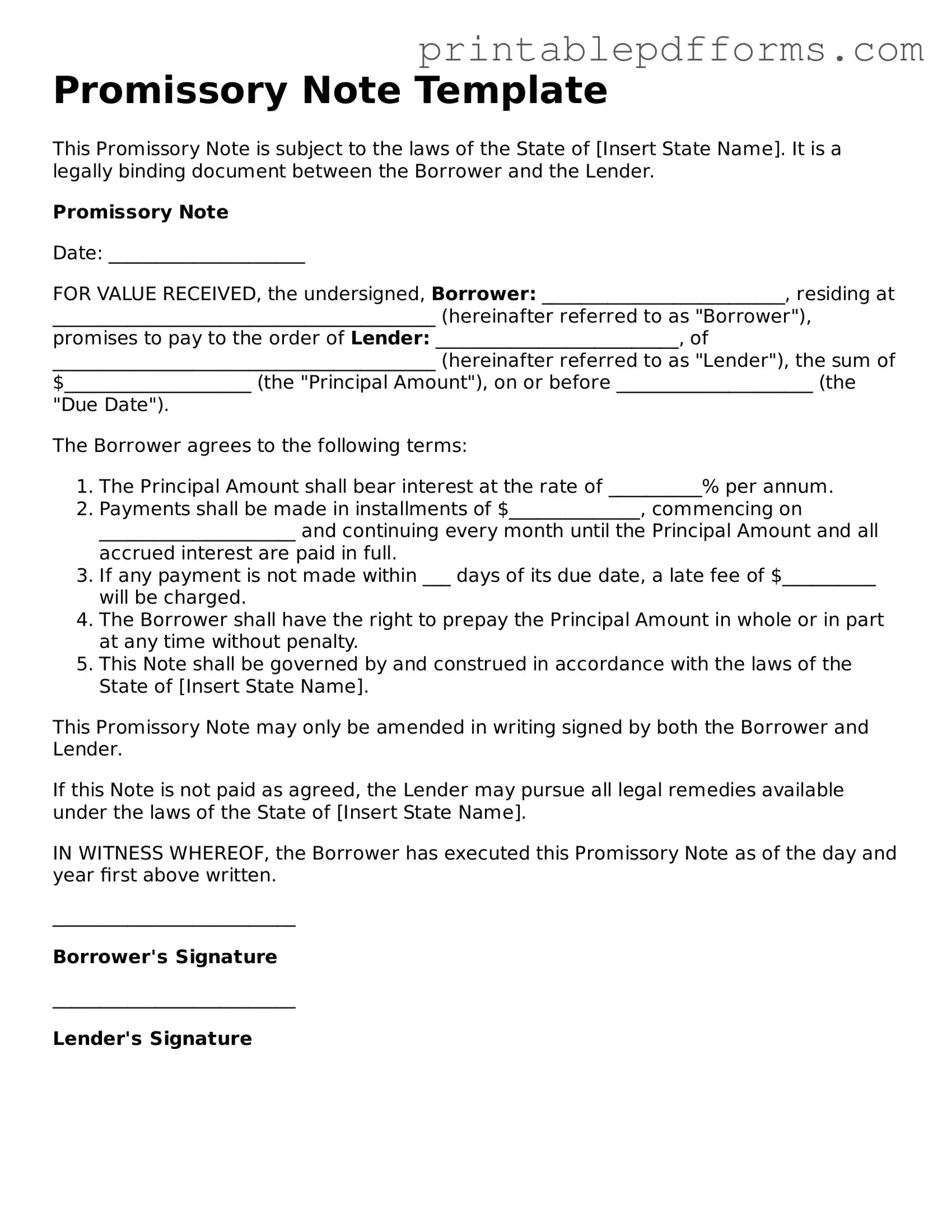Promissory Note Template
This Promissory Note is subject to the laws of the State of [Insert State Name]. It is a legally binding document between the Borrower and the Lender.
Promissory Note
Date: _____________________
FOR VALUE RECEIVED, the undersigned, Borrower: __________________________, residing at _________________________________________ (hereinafter referred to as "Borrower"), promises to pay to the order of Lender: __________________________, of _________________________________________ (hereinafter referred to as "Lender"), the sum of $____________________ (the "Principal Amount"), on or before _____________________ (the "Due Date").
The Borrower agrees to the following terms:
- The Principal Amount shall bear interest at the rate of __________% per annum.
- Payments shall be made in installments of $______________, commencing on _____________________ and continuing every month until the Principal Amount and all accrued interest are paid in full.
- If any payment is not made within ___ days of its due date, a late fee of $__________ will be charged.
- The Borrower shall have the right to prepay the Principal Amount in whole or in part at any time without penalty.
- This Note shall be governed by and construed in accordance with the laws of the State of [Insert State Name].
This Promissory Note may only be amended in writing signed by both the Borrower and Lender.
If this Note is not paid as agreed, the Lender may pursue all legal remedies available under the laws of the State of [Insert State Name].
IN WITNESS WHEREOF, the Borrower has executed this Promissory Note as of the day and year first above written.
__________________________
Borrower's Signature
__________________________
Lender's Signature
